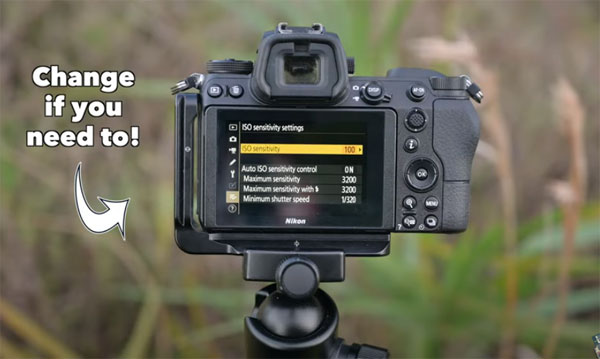Introduction
Close-up shots are a popular technique used in photography to capture intricate details of a subject. Whether you are photographing flowers, insects, or even food, knowing the right camera settings can make a significant difference in the quality of your close-up shots. In this article, we will discuss the essential camera settings you need to consider when taking close-up shots, including aperture, shutter speed, ISO, and focusing techniques.
Aperture
One of the critical camera settings to consider when taking close-up shots is aperture. Aperture refers to the size of the opening in the lens through which light passes. A wider aperture (lower f-stop number) will create a shallow depth of field, which can help isolate your subject from the background and create a more visually appealing image. When shooting close-up shots, using a wide aperture like f/2.8 or f/4 can help you achieve that desired blurred background effect.

On the other hand, if you want more of your subject to be in focus, you can use a smaller aperture (higher f-stop number) like f/11 or f/16. Keep in mind that using a smaller aperture will require more light, so you may need to adjust your ISO or use a slower shutter speed to compensate for the reduced light coming through the lens.
Shutter Speed
Another important camera setting to consider when taking close-up shots is shutter speed. Shutter speed refers to the amount of time the shutter remains open to allow light to hit the camera sensor. When shooting close-up shots, using a fast shutter speed like 1/250s or faster can help freeze any movement in your subject and prevent motion blur in your images.

However, if you are shooting in low light conditions or using a smaller aperture, you may need to use a slower shutter speed to allow more light to enter the camera. Keep in mind that using a slow shutter speed can introduce camera shake, so it’s essential to use a tripod or stabilize your camera to ensure sharp images.
ISO
ISO is another crucial camera setting to consider when taking close-up shots. ISO determines the sensitivity of your camera sensor to light, with higher ISO settings being more sensitive to light but also introducing more digital noise in your images. When shooting close-up shots, it’s essential to keep your ISO as low as possible to maintain image quality and sharpness.
If you are shooting in low light conditions and need to increase your ISO, try to stay within a range of 100-800 to minimize noise in your images. Additionally, shooting in RAW format can help you retain more detail in your images and reduce the impact of noise when editing your photos.
Focusing Techniques
In close-up photography, achieving sharp focus on your subject is crucial to creating compelling images. There are several focusing techniques you can use to ensure your subject is in focus when shooting close-up shots. One popular technique is to use manual focus to have more control over what part of the image you want to be sharp.
Another useful technique is focus stacking, where you take multiple shots at different focus points and combine them in post-processing to create a single image with a greater depth of field. This technique can be particularly helpful when shooting close-up shots of subjects with intricate details that you want to be in focus from front to back.
White Balance
White balance is another essential camera setting to consider when taking close-up shots. White balance refers to the color temperature of light in your images, with different light sources having different color temperatures. When shooting close-up shots, it’s crucial to adjust your white balance settings to ensure accurate color reproduction in your images.
If you are shooting in natural light, you can use the daylight white balance setting to capture colors accurately. However, if you are shooting indoors under artificial light, you may need to adjust your white balance settings to match the color temperature of the light source. Using a custom white balance setting or shooting in RAW format can give you more flexibility when editing your images later.
Composition
In addition to camera settings, composition plays a significant role in creating impactful close-up shots. When composing your close-up shots, consider the rule of thirds to create a balanced and visually appealing image. Placing your subject off-center can create a more dynamic composition and draw the viewer’s eye to the focal point of your image.
Another composition technique to consider when shooting close-up shots is using leading lines or symmetry to guide the viewer’s eye through the image. Experiment with different angles and perspectives to find the most compelling composition for your close-up shots.
Post-Processing
After capturing your close-up shots, post-processing can help enhance the quality and visual impact of your images. Adjusting the exposure, contrast, and saturation can help bring out the details in your close-up shots and make your subjects pop. You can also use tools like sharpening and noise reduction to refine the sharpness and clarity of your images.
Experiment with different editing techniques and styles to find a post-processing workflow that works best for your close-up shots. Remember that post-processing should enhance your images rather than completely alter them, so strive for a natural and realistic look in your final edits.
Conclusion
In conclusion, mastering the right camera settings for close-up shots can elevate your photography and help you capture stunning and detailed images of your subjects. By understanding and adjusting settings like aperture, shutter speed, ISO, and white balance, you can create visually appealing close-up shots that stand out. Remember to experiment with different focusing techniques, composition styles, and post-processing workflows to develop your unique photographic style and create compelling close-up shots. With practice and patience, you can achieve professional-looking close-up shots that showcase the beauty and intricacy of your subjects.
